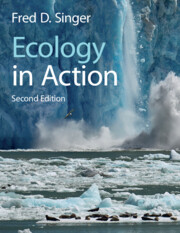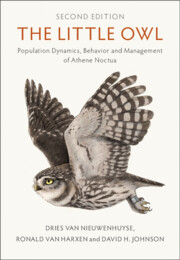Refine search
Actions for selected content:
52 results
3 - Making comparisons
- from Part 2 - Analysing
-
- Book:
- Introduction to Epidemiology for the Health Sciences
- Published online:
- 28 May 2025
- Print publication:
- 24 April 2025, pp 60-92
-
- Chapter
- Export citation
11 - Community health needs assessment
- from Part III - Skills for practice
-
-
- Book:
- An Introduction to Community and Primary Health Care
- Published online:
- 27 March 2025
- Print publication:
- 20 March 2025, pp 174-190
-
- Chapter
- Export citation
10 - Who sank the boat? Association and causation
-
- Book:
- Essential Epidemiology
- Published online:
- 27 September 2024
- Print publication:
- 12 November 2024, pp 233-249
-
- Chapter
- Export citation
4 - Poverty, Populations and Petrol
- from Part II - The Logic of Evil
-
- Book:
- The Peace Formula
- Published online:
- 31 August 2024
- Print publication:
- 15 August 2024, pp 49-66
-
- Chapter
- Export citation
Chapter 8 - Life History Evolution
- from Part III - Population Ecology
-
- Book:
- Ecology in Action
- Published online:
- 04 April 2024
- Print publication:
- 04 July 2024, pp 196-219
-
- Chapter
- Export citation

Ecology in Action
-
- Published online:
- 04 April 2024
- Print publication:
- 04 July 2024
-
- Textbook
- Export citation

The Little Owl
- Population Dynamics, Behavior and Management of Athene noctua
-
- Published online:
- 29 September 2023
- Print publication:
- 19 October 2023
D - Qubits
-
- Book:
- Quantum Processes and Measurement
- Published online:
- 27 July 2023
- Print publication:
- 10 August 2023, pp 222-226
-
- Chapter
- Export citation
Glyphosate resistance in junglerice (Echinochloa colona) and alternative herbicide options for its effective control
-
- Journal:
- Weed Technology / Volume 36 / Issue 1 / February 2022
- Published online by Cambridge University Press:
- 26 January 2022, pp. 38-47
-
- Article
-
- You have access
- Open access
- HTML
- Export citation
3 - Internal Self-determination and the Populations of States
-
- Book:
- Internal Self-Determination in International Law
- Published online:
- 23 July 2021
- Print publication:
- 05 August 2021, pp 51-72
-
- Chapter
- Export citation
Disaster Planning for Homeless Populations: Analysis and Recommendations for Communities
-
- Journal:
- Prehospital and Disaster Medicine / Volume 35 / Issue 3 / June 2020
- Published online by Cambridge University Press:
- 04 March 2020, pp. 322-325
- Print publication:
- June 2020
-
- Article
-
- You have access
- HTML
- Export citation
34 - Assessment Issues within Neuropsychological Settings
- from Part IV - Clinical Assessment in Specific Settings
-
-
- Book:
- The Cambridge Handbook of Clinical Assessment and Diagnosis
- Published online:
- 06 December 2019
- Print publication:
- 19 December 2019, pp 472-484
-
- Chapter
- Export citation
Part IV - Clinical Assessment in Specific Settings
-
- Book:
- The Cambridge Handbook of Clinical Assessment and Diagnosis
- Published online:
- 06 December 2019
- Print publication:
- 19 December 2019, pp 445-497
-
- Chapter
- Export citation
Best care options for older prisoners with dementia: a scoping review
-
- Journal:
- International Psychogeriatrics / Volume 31 / Issue 8 / August 2019
- Published online by Cambridge University Press:
- 15 August 2019, pp. 1081-1097
-
- Article
- Export citation
Interpreting biological variation: seeds, populations and sensitivity thresholds
-
- Journal:
- Seed Science Research / Volume 28 / Issue 3 / September 2018
- Published online by Cambridge University Press:
- 13 June 2018, pp. 158-167
-
- Article
- Export citation
Appearance and Spread of Triazine Resistance in Common Lambsquarters (Chenopodium album)
-
- Journal:
- Weed Technology / Volume 4 / Issue 1 / March 1990
- Published online by Cambridge University Press:
- 12 June 2017, pp. 173-177
-
- Article
- Export citation
Occurrence and Control of Triazine-Resistant Common Waterhemp (Amaranthus rudis) in Field Corn (Zea mays)
-
- Journal:
- Weed Technology / Volume 10 / Issue 3 / September 1996
- Published online by Cambridge University Press:
- 12 June 2017, pp. 570-575
-
- Article
- Export citation
Weed Seed Banks Are More Dynamic in a Sod-Based, Than in aConventional, Peanut–Cotton Rotation
-
- Journal:
- Weed Science / Volume 63 / Issue 4 / December 2015
- Published online by Cambridge University Press:
- 20 January 2017, pp. 877-887
-
- Article
- Export citation
The consequences of introducing stochasticity in nutrient utilisation models: the case of phosphorus utilisation by pigs
-
- Journal:
- British Journal of Nutrition / Volume 115 / Issue 3 / 14 February 2016
- Published online by Cambridge University Press:
- 26 November 2015, pp. 389-398
- Print publication:
- 14 February 2016
-
- Article
-
- You have access
- HTML
- Export citation
Prevalence of Toxoplasma gondii in localized populations of Apodemus sylvaticus is linked to population genotype not to population location
-
- Journal:
- Parasitology / Volume 142 / Issue 5 / April 2015
- Published online by Cambridge University Press:
- 01 December 2014, pp. 680-690
-
- Article
- Export citation
